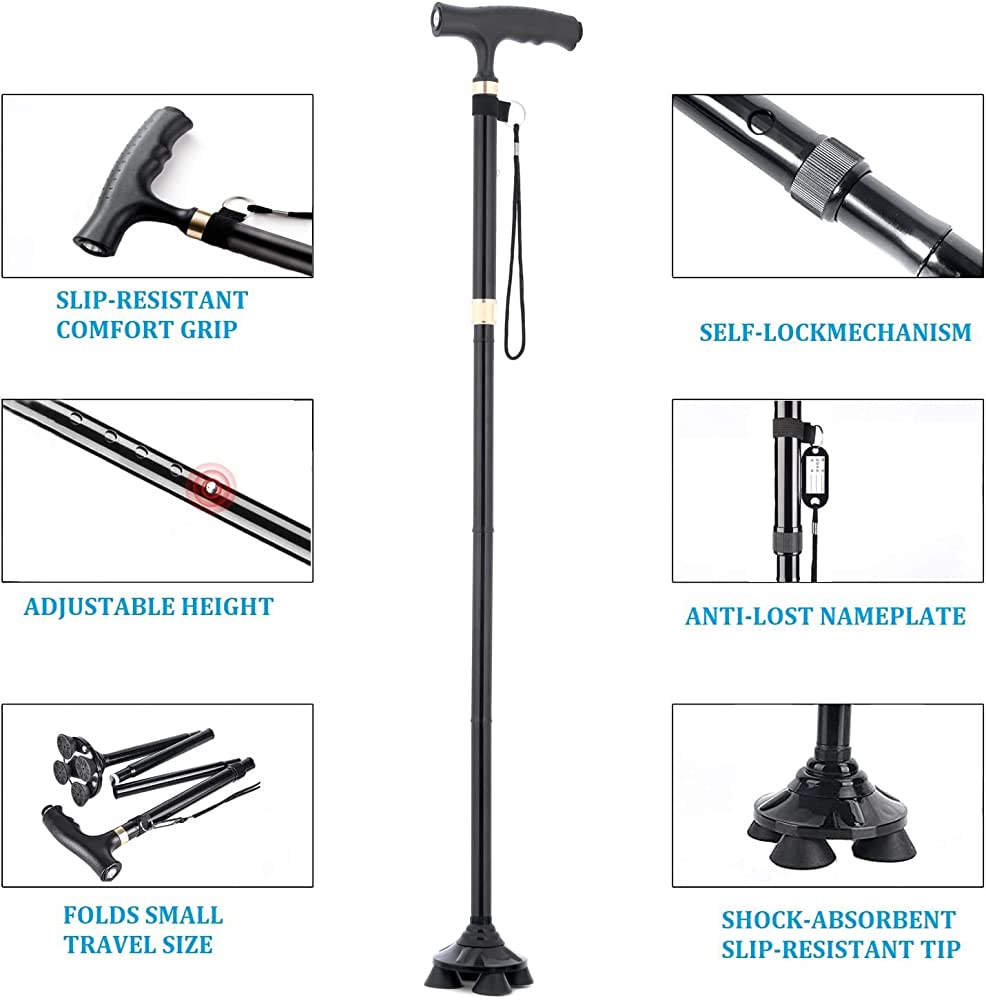How to properly use and maintain a walking cane for hiking?
Proper use and maintenance of a walking cane for hiking is crucial to ensure that it provides the necessary support, stability, and safety on the trail. Here are some tips on how to properly use and maintain a walking cane for hiking
Adjust the cane to the appropriate height
The first step in using a hiking cane is to adjust it to the appropriate height. The cane should be adjusted so that it reaches up to your armpit when you are standing upright with your arm at your side. If you’re not sure how to adjust your hiking cane, consult the manufacturer’s instructions or ask a medical professional for assistance.
Place the cane on the opposite side of your injured or weaker leg
When using a hiking cane, it should be placed on the opposite side of your injured or weaker leg. For example, if your right leg is injured, you should hold the hiking cane in your left hand and place it on the ground as you step forward with your left foot. This helps provide additional support and stability to the weaker leg.
Use the cane to support your weight
When using a hiking cane, you should use it to support your weight as you walk. The hiking cane should be planted firmly on the ground before you take a step, and you should lean slightly on the cane as you step forward. This helps provide additional support and stability on uneven or rough terrain.

Replace the tip regularly
The tip of your hiking cane can wear out over time, particularly if you use it frequently on rough terrain. It’s important to regularly check the tip of your hiking cane and replace it if it shows signs of excessive wear or damage. Many hiking canes come with interchangeable tips, making it easy to replace them as needed.
Clean the cane regularly
To maintain your hiking cane, it’s important to clean it regularly. Use a damp cloth to wipe down the cane, paying particular attention to the grip and tip. Avoid using harsh chemicals or abrasive materials that could damage the cane.
Store the cane in a dry, cool place
When you’re not using your hiking cane, it’s important to store it in a dry, cool place to prevent damage. Avoid leaving the cane in direct sunlight or extreme temperatures, which can cause the material to warp or crack.
Check the cane for damage
Regularly check your hiking cane for signs of damage, such as cracks, bends, or loose parts. If you notice any damage, stop using the cane immediately and consult a medical professional or the manufacturer for assistance.
By following these tips on how to properly use and maintain a walking cane for hiking, you can enjoy the great outdoors with greater comfort, confidence, and safety. Remember to choose a hiking cane that is appropriate for your needs and physical abilities, and consult a medical professional if you have any concerns or questions about using a hiking cane.
Uses of walking cane
The function of the cane is to increase the supporting surface when walking: to reduce the load that the lower limbs or the body’s bone structure must bear. Generally, using the cane with the unaffected hand can reduce the weight of the affected lower limb by 20% to 25%. It can share the load of the patient’s foot and reduce the claudication caused by muscle weakness of the lower limbs, such as patients with degenerative arthritis. For patients with above-knee amputations, using a cane to increase the moment arm of the patient’s load can reduce the reaction force between the residual limb and the prosthetic limb. Reduce the muscle strength required when walking and turning. For patients with peripheral vascular disease, it can reduce the pressure on the blood circulation of the lower extremities.